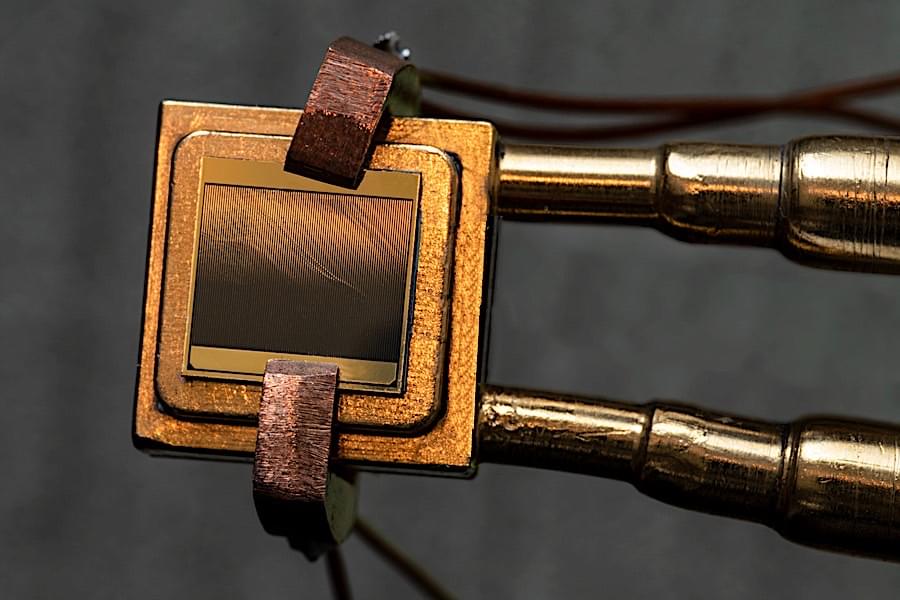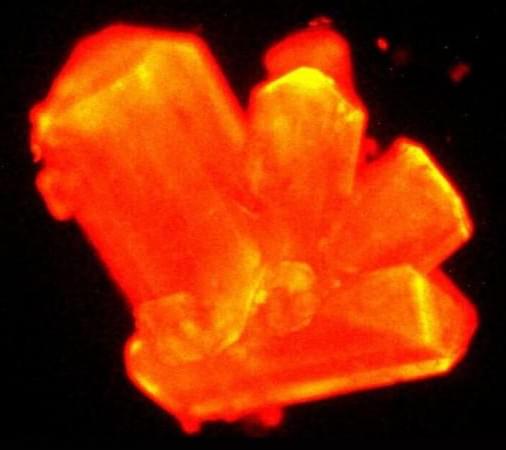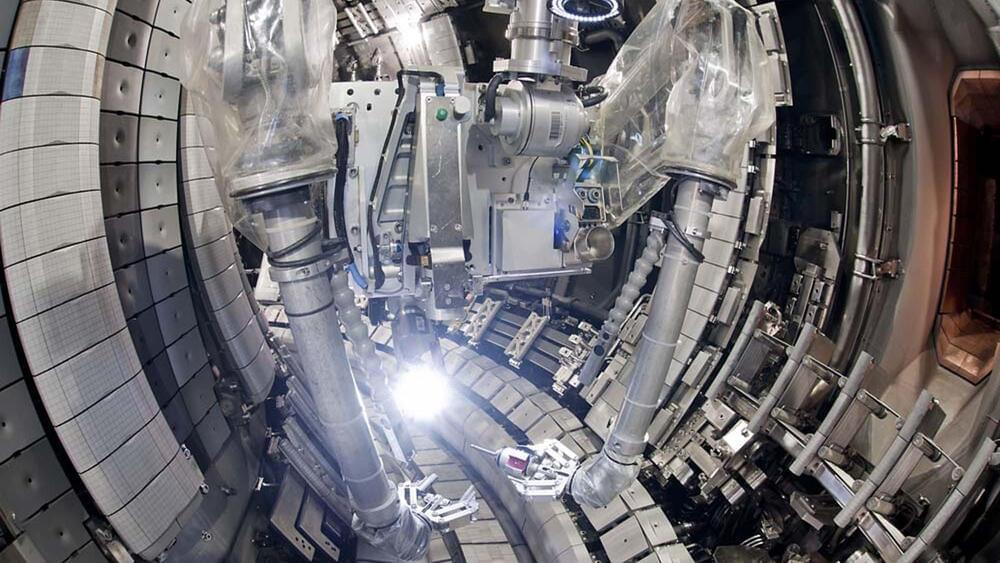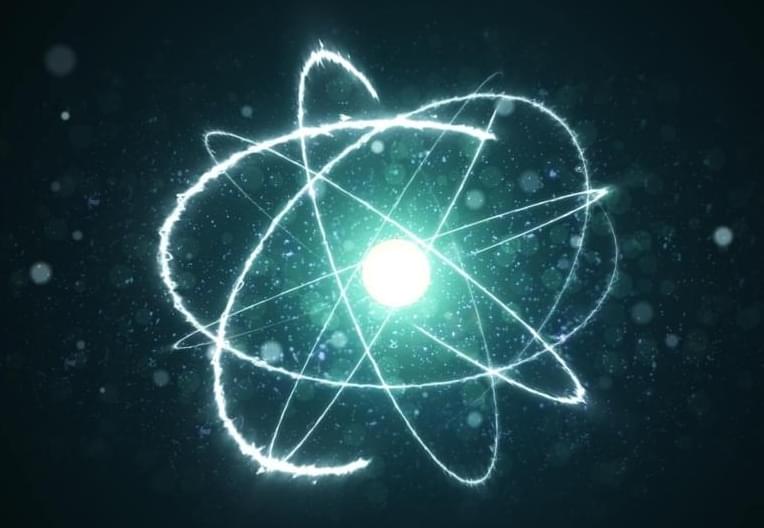Crossrail, or the Elizabeth Line, is set to revolutionize London transport, with high-speed trains running from east to west underneath the UK capital.
Category: nuclear energy – Page 85

Thermophotovoltaic “Heat Engine” Design Could Change the Future of Power Grids
There are so many paths we humans are running down in our chase for a greener future it’s extremely hard to keep track of everything. The auto industry is trying to go electric, either by means of batteries or hydrogen, the aviation industry is going for biofuels, while energy production and storage, well, this one is all over the place, betting on anything from the sun to the wind and nuclear.
We Went Inside the Largest Nuclear Fusion Reactor
This could be the most important construction project of our lifetimes. See how digital tools are enabling the ITER project — https://bit.ly/3KGfiF8
Full story here — https://theb1m.com/video/inside-iter-worlds-largest-nuclear-fusion-reactor.
This video contains paid promotion for Thinkproject. See how ITER’s teams are using Thinkproject’s tools to stay on track — https://bit.ly/3KGfiF8
Presenter and Narrator — Fred Mills.
Producer — Jaden Urbi.
Video Editing — Aaron Wood.
Graphics — Vince North.
Content Partnership — Liam Marsh.
Executive Producers — Fred Mills, James Durkin and Graham MacAree.
Special thanks to ITER. Additional footage and images courtesy of ITER, WGBH and Reagan Library.
Go Behind The B1M. Click “JOIN” here — https://bit.ly/2Ru3M6O

Squeezing Heavy Elements Between Diamonds Might Help Recycle Nuclear Waste
2020 One of the heaviest known elements can be modified more than scientists thought — possibly opening the door to new ways of recycling nuclear fuel and enhanced long-term storage of radioactive elements — according to a recent study published in the journal Nature.
Squeezing heavy elements between diamonds might open doors for recycling nuclear waste.

CDF collaboration at Fermilab announces most precise ever measurement of W boson mass to be in tension with the Standard Model
The discovery changes our understanding of everything. The world of physics may have been turned on its head.
“While this is an intriguing result, the measurement needs to be confirmed by another experiment before it can be interpreted fully,” said Fermilab Deputy Director Joe Lykken.
The W boson is a messenger particle of the weak nuclear force. It is responsible for the nuclear processes that make the sun shine and particles decay. Using high-energy particle collisions produced by the Tevatron collider at Fermilab, the CDF collaboration collected huge amounts of data containing W bosons from 1985 to 2011.
CDF physicist Chris Hays of the University of Oxford said, “The CDF measurement was performed over the course of many years, with the measured value hidden from the analyzers until the procedures were fully scrutinized. When we uncovered the value, it was a surprise.”

Oxford spinoff demonstrates world-first hypersonic “projectile fusion”
Oxford spinoff First Light Fusion says its novel “projectile” approach offers “the fastest, simplest and cheapest route to commercial fusion power.” The company is now celebrating a significant breakthrough with its first confirmed fusion reaction.
The nuclear fusion space is heating up, if you’ll pardon the pun, as the world orients itself toward a clean energy future. Where current nuclear power plants release energy by splitting atoms in fission reactions, fusion reactors will release energy in the same way the Sun does – by smashing atoms together so hard and so fast that they fuse into higher elements.
Most of the big tokamak and stellarator-based fusion projects in progress now intend to create monstrously high temperatures, higher than in the core of the Sun, in magnetically confined plasma, hoping to get those atoms moving fast enough to overcome the powerful repulsion between two nuclei.

JET’s record result and the quest for fusion energy
Physics World Stories podcast, Andrew Glester catches up with two engineers from the UK Atomic Energy Authority to learn more about this latest development. Leah Morgan, a physicist-turned-engineer explains why JET’s recent success is great news for the ITER project – a larger experimental fusion reactor currently under construction in Cadarache, France. Later in the episode, mechanical design engineer Helena Livesey talks about the important role of robotics for accessing equipment within the extreme conditions inside a tokamak device.

HB11 Energy demonstrates nuclear fusion using high-power lasers
Australia’s first fusion energy company HB11 Energy has demonstrated a world-first ‘material’ number of fusion reactions by a private company, producing ten times more fusion reactions than expected based on earlier experiments at the same facility. The technology utilizes high-power, high-precision lasers to start non-thermal fusion reactions between hydrogen and boron-11 rather than heating hydrogen isotopes to hundred-million-degrees temperatures.
This approach was predicted in the 1970s at UNSW by Australian theoretical physicist and HB11 Energy co-founder Professor Heinrich Hora. It differs radically from most other fusion efforts to date that require heating of hydrogen isotopes to millions of degrees.
Nuclear fusion powers the Sun and other stars as hydrogen atoms fuse together to form helium, and the matter is converted into energy. The Sun accomplishes fusion by having a huge amount of hydrogen atoms packed into a plasma that’s superheated to tens of millions of degrees at its core. At these temperatures, the hydrogen atoms move so fast and eventually reach speeds high enough to bring the ions close enough together that they smack into each other and fuse, releasing the energy that warms our planet.

HB11’s hydrogen-boron laser fusion test yields groundbreaking results
HB11 is approaching nuclear fusion from an entirely new angle, using high power, high precision lasers instead of hundred-million-degree temperatures to start the reaction. Its first demo has produced 10 times more fusion reactions than expected, and the company says it’s now “the only commercial entity to achieve fusion so far,” making it “the global frontrunner in the race to commercialize the holy grail of clean energy.”
We’ve covered Australian company HB11’s hydrogen-boron laser fusion innovations before in detail, but it’s worth briefly summarizing what makes this company so different from the rest of the field. In order to smash atoms together hard enough to make them fuse together and form a new element, you need to overcome the incredibly strong repulsive forces that push two positively-charged nuclei apart. It’s like throwing powerful magnets at each other in space, hoping to smash two north poles together instead of having them just dance out of each other’s way.
The Sun accomplishes this by having a huge amount of hydrogen atoms packed into a plasma that’s superheated to tens of millions of degrees at its core. Heat is a measure of kinetic energy – how fast a group of atoms or molecules are moving or vibrating. At these temperatures, the hydrogen atoms are moving so fast that they smack into each other and fuse, releasing the energy that warms our planet.